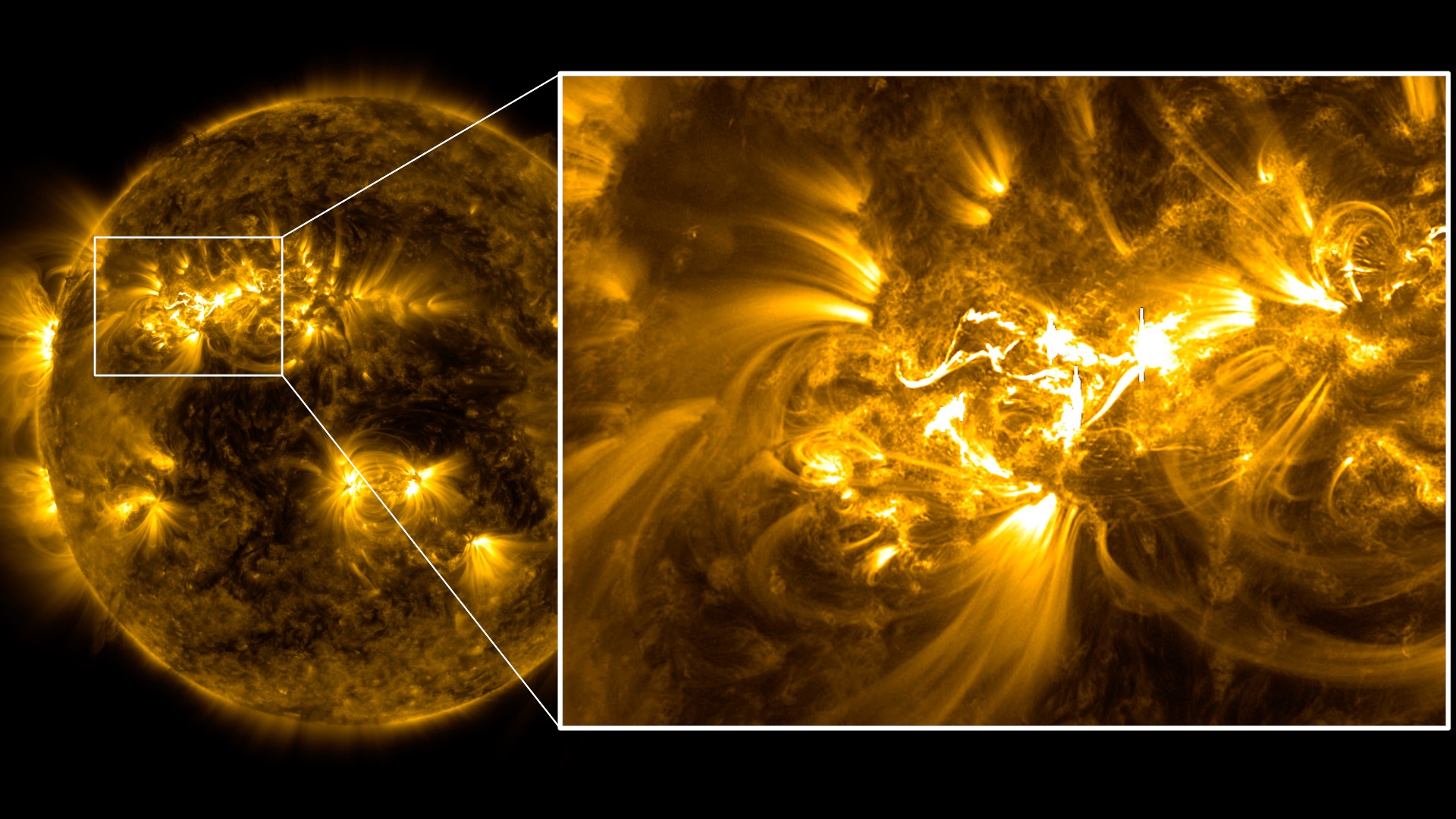A Peek from SDO: An Eruption on the Solar Limb
Solar Dynamics Observatory (SDO) operates in a geosynchronous orbit around Earth to obtain a continuous view of the Sun. The particular instrument in this visualization records imagery in the ultraviolet portion of the spectrum at wavelengths normally absorbed by Earth's atmosphere - so we need to observe them from space.
A large eruption occurs off the limb of the Sun (lower right) in this image sequence from May 2022.
The solar flare as seen in AIA 304 Angstrom filter. Correction is applied for the instrument Point-Spread Function (PSF).
What is the PSF (Point Spread-Function)?
Many telescopes, especially reflecting telescopes such as the ones used on SDO (Wikipedia), have internal structures that support various optical components. These components can result in incoming light being scattered to other parts of the image. This can appear in the image as a faint haze, brightening dark areas and dimming bright areas. The point-spread function (Wikipedia) is a measure of how light that would normally be received by a single camera pixel, gets scattered onto other pixels. This is often seen as the "spikes" seen in images of bright stars. For SDO, it manifests as a double-X shape centered over a bright flare (see Sun Emits Third Solar Flare in Two Days). The effect of this scattered light can be computed, and removed, by a process called deconvolution (Wikipedia). This is often a very compute-intensive process which can be sped up by using a computers graphics-processing unit (GPU) for the computation.
The solar flare as seen in AIA 304 Angstrom filter. No correction is applied for the instrument Point-Spread Function (PSF).

Time-stamp slates for these frames.
Credits
Please give credit for this item to:
NASA's Scientific Visualization Studio
-
Visualizer
- Tom Bridgman (Global Science and Technology, Inc.)
-
Producer
- Scott Wiessinger (KBR Wyle Services, LLC)
-
Technical support
- Laurence Schuler (ADNET Systems, Inc.)
- Ian Jones (ADNET Systems, Inc.)
Release date
This page was originally published on Friday, August 19, 2022.
This page was last updated on Monday, January 6, 2025 at 12:24 AM EST.
Missions
This page is related to the following missions:Datasets used
-
AIA 304 (304 Filter) [SDO: AIA]
ID: 677This dataset can be found at: http://jsoc.stanford.edu/
See all pages that use this dataset
Note: While we identify the data sets used on this page, we do not store any further details, nor the data sets themselves on our site.
